It is important to note that maintaining the proper indoor humidity levels is imperative to keep a home healthy, comfortable,e and energy efficient. The first step towards this is purchasing the correct sized dehumidifier; a small or large one would cause inefficiency, ineffectiveness, or unneeded power costs. This guide will provide you with an outline of how to assess the moisture requirements in your house, select the correct size dehumidifier based on factors such as room dimensions and dampness, and gain insight into key considerations, including performance metrics and placement strategies. Through this article, you will be able to gain adequate knowledge that will help you make an appropriate decision for your house’s unique needs.
What factors determine the size of the dehumidifier I need?
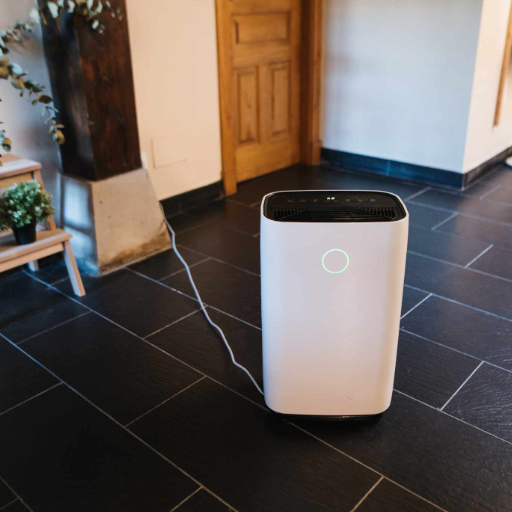
A few factors determine the size of the dehumidifier needed, including the room size, air moisture level, and specific environmental conditions. First, room dimensions are essential because large spaces require dehumidifiers with higher pint capacity to ensure adequate moisture removal. Second, consider humidity levels in the area; spaces with high moisture content, like basements or areas prone to water leakages, require more powerful units. Lastly, regional climate and temperature can also affect performance in cooler environments where dehumidifiers may be necessary to function at lower operational temperatures most efficiently. This is how you can know if you need a big or small dehumidifier for your space.
Understanding square footage and its impact on dehumidifier size
The number of square feet directly determines how much capacity a dehumidifier needs to maintain comfort inside a particular space by managing the level of moisture in it. To choose the right unit, determine the room area by multiplying its length by width, i.e., 20 feet x 15 feet =300 sq ft. Dehumids are usually labeled with their pints/day (ppd) moisture removal rate, which goes hand in hand with their sizes.
The standard capacity of a 20-pint dehumidifier is ideal for areas with moderate humidity levels within 500 square feet. On the other hand, bigger spaces, such as those from 500 to 1,000 square feet, may require a 30-40 pint unit, depending on the humidity. Units recommended for rooms over 1500 sq ft have a pints rating of 50 or above. This also includes issues such as the height of the room and heat generated by equipment that add to moisture levels. You can maintain effective and even humidity control by matching space dimensions with dehumidifier specifications.
How humidity levels affect your dehumidifier choice
When choosing a dehumidifier, I always think about how humid my room is because it will determine whether I need it. Take, for example, high relative humidity (RH), which demands a large-capacity dehumidifier to remove excess moisture properly. A smaller one may do just fine if it’s only moderately humid. Besides this, I consider areas like area size and severity of wetness as areas with high RH that build up moisture quickly, thus needing a more muscular system for consistent performance. Such decisions guarantee that I pick out a machine that matches the conditions prevailing in that area, thereby maximizing efficiency.
Considering the type of space: basement, crawl space, or whole house
Concerning the form of space—whether it is a basement, crawl space, or an entire house—I assess the peculiarities and needs of each place. Regarding basements, I prefer high-capacity dehumidifiers because moisture levels are often high. Compact models with remote control capabilities and low profiles are best for crawl spaces, which are usually small and difficult to access. As far as whole-house solutions are concerned, I go for central dehumidifiers that blend well with HVAC systems, ensuring uniform humidity management in the entire home. This guarantees that my clients will meet their specific needs adequately and optimally.
How do I calculate the right dehumidifier size for my space?
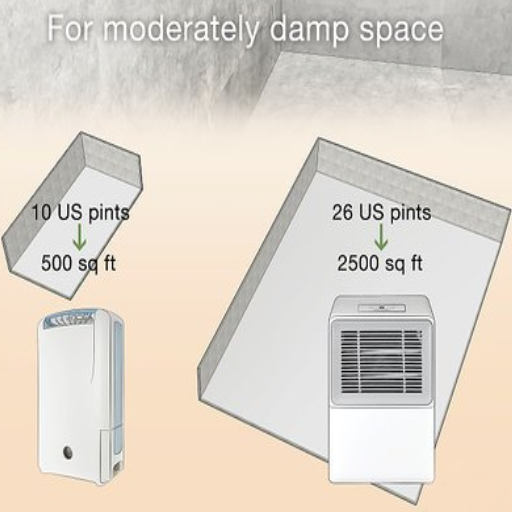
Determining the right dehumidifier size for your space requires considering the room’s square footage and humidity level. Begin by measuring in square feet and diagnosing the moisture issue—whether minor, medium, or significant. Essentially, dehumidifiers are evaluated on their ability to withdraw specific pints of ionic from the air per day, which usually corresponds to such circumstances. To illustrate, small to medium-sized spaces with moderate dampness typically require a 30-50-pint dehumidifier. In contrast, more extensive areas or spaces with high humidity may need a 70-pint or more fabulous capacity model. Additionally, check the manufacturer’s sizing charts, which provide detailed guidance based on different room sizes and moisture levels for precise selection.
Using a dehumidifier sizing chart
A dehumidifier sizing chart is one of the most essential tools to determine the right amount of capacity based on room size and the extent of moisture problems. The usual approach is to measure square-foot room sizes and classify humidity conditions as damp, very damp, wet, or extremely wet (e.g., standing water or constant moisture). For instance, a 500-square foot room like this, when categorized as “very damp,” might need a 30-40 pint unit, while another 500-square foot space under “wet” conditions may require a 50-pint or larger device. Large areas, like a basement of about 2,000 square feet with excessive humidity, may require a unit with a range above 70 pints.
Many manufacturers provide detailed sizing charts that consider room dimensions and environmental factors. Ensure you have accurate data by verifying actual conditions found within those areas that are to be dehumidified. Additionally, other variables such as carpeting presence, frequency of intrusion into moisture, and ventilation quality can also affect the choice of an ideal humidifier. Thus, using these parameters from the charts will help you select the best appliance for your precise needs.
Determining the square footage of your area
To determine place’s area, I use a tape measure to measure its length and width in feet. Then, I multiply these two values to give me the total square footage. I break down the space into bits for irregular surfaces, take measurements for each part, and sum them up as a whole quantity. This technique guarantees precision and takes into account peculiar layouts.
Factoring in moisture levels and climate
When considering moisture levels and climate, it is essential to consider how these variables affect materials or systems in a given location concerning durability and performance. Moisture content affects material stability, especially in wood and drywall, among other porous materials prone to mold growth or dimensional instability due to high humidity. Climate factors like temperature changes and precipitation patterns also influence sustainability over time. To know precisely what kind of materials or systems will be most suitable for your climate conditions, monitor relative humidity using a hygrometer and compare it with local weather trends to select the right material or system for you; this way, you maintain sustainability by being specific about how things shall keep well all through time.
What size dehumidifier do I need for different room types?
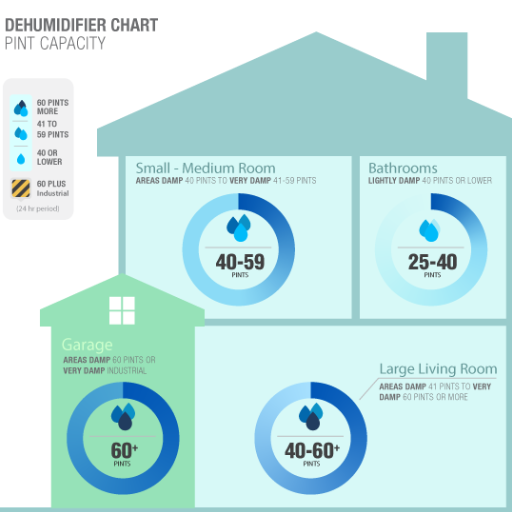
It depends on the square footage of your room and how wet it is when shopping for a dehumidifier. For small spaces up to 300 ft² with little moisture, a 20-30 pints per day capacity dehumidifier will do. For medium-sized spaces from 300-500 sq. ft., having moderate dampness, you may need to go for a 40-50 pint-capacity one. You might consider going for anything between 60 and 70 pint-per-day units if you have large rooms measuring up to 1,000 sq.ft or highly moistened areas. Also, you must consider any unique conditions like high humidity areas or poorly ventilated places that can affect its performance.
Choosing a dehumidifier for basements and crawl spaces
When choosing a dehumidifier for basements and crawlspaces, it is essential to consider some inherent problems like low temperatures, high humidity levels, and lack of ventilation. A defrost feature incorporated into the design of these types of units ensures that they do not freeze when being used in colder environments. Models with a capacity ranging from twenty to thirty pints per day are usually enough for areas with sizes below fifteen hundred square feet, which experience average humidities. However, select one with fifty up to seventy pints if any parts measure more than fifteen hundred square feet, making such regions damper if they are basements or crawl spaces that contain water anywhere near them.
Long-lasting operation of crawl space dehumidifiers requires the choice of professional-grade facilities. These facilities feature auto-humidistat regulation, energy-efficient labels, and extra drainage options to increase functionality in challenging conditions. This will ensure maximum performance by sealing and insulating properly while considering ventilation possibilities to keep moisture build-up at bay. To ensure year-round effectiveness, always read product specifications and choose a unit that works in lower temperatures.
Selecting the right size for bedrooms and living areas
When choosing an appropriate size of a dehumidifier for bedrooms or living rooms, it is essential to consider the area in square footage as well as the usual levels of humidity. Smaller rooms with an area not exceeding 300 square feet usually require between 20-30 point dehumidification capacity, whereas mid-sized spaces around 500-700 sq ft may need something closer to 40-50 pints. For large areas reaching nearly 1000 square feet, choose a 60-70 pint model. Additionally, factors like lack of proper ventilation or sources of excessive humidity should be considered. This may mean going for one with a higher capacity to manage high humidity levels effectively. Always consult manufacturer guidelines on room capacity recommendations.
Whole-house dehumidifier options and considerations
When discussing whole-house dehumidifiers, I consider whether they can hold a lot of moisture, if they consume less energy, and how simple or complex it is to install. Many dehumidifiers are produced to blend well with the existing HVAC systems so that they work harmoniously within the house. My priority for such units is those with Energy Star certification, which helps minimize operating costs. In contrast, others have high-tech features like automation that controls humidity automatically and compatibility with home monitoring solutions. Also important is where they are placed – typically along the ductwork or centrally – for maximum efficiency. Lastly, I also compare different warranties offered and customer support services available by these manufacturers to ensure satisfaction in the long run.
Are there different types of dehumidifiers based on size?
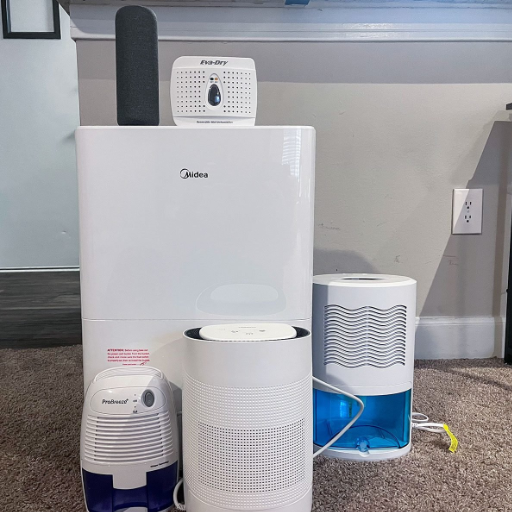
In terms of size and capacity, dehumidifiers can be classified into several categories, usually measured by pints of moisture removed daily. Compact units remove 20-30 pints daily for smaller spaces such as bathrooms or wardrobes. Mid-sized models are best for medium-sized rooms or basements since they remove about 40-50 pints daily. In contrast, larger systems are ideal for heating vast spaces where over 70 pints may be eliminated in a single day. The selected scale will depend on both square footage and the humidity being controlled at any time in space.
Small dehumidifiers: When and where to use them
The most suitable small dehumidifiers are those for tight spaces like toilets, wardrobes, laundries, or tiny offices. Such places have a size of below 300 sq ft and experience medium to high humidity levels. These machines can prevent molds, mildew, and bad smells in these small spaces by keeping the relative humidity at 50% or less. Small dehumidifiers also come in handy when trying to maintain dryness in recreational vehicles, shipping vessels, or storage compartments so that materials do not get spoilt. They are also energy-saving and, hence, ideal for use within such areas where there is a need for localized dehumidification services, but large machines cannot be used.
Medium-sized dehumidifiers: Ideal applications
Medium-sized dehumidifiers are perfect for basements, bedrooms, and living rooms, which are pretty big since moisture has to be controlled to prevent dampness and improve air quality. The units generally cover about 500-1500 sq ft and should be used if consistent humidity control is needed. Unlike small dehumidifiers, these have higher capacity, making them more efficient yet relatively portable. Thus, they are great for residential purposes and some forms of light commercial activities because they try to balance the power and size associated with their operations at home, thus being versatile enough for both people who reside there and traders within such environs.
Large dehumidifiers: Benefits and suitable environments
On the other hand, massive dehumidifiers are designed to deal with large amounts of moisture in big spaces (usually over 1,500 square feet). They work best in basements, warehouses, manufacturing units, and any other significant home subjected to high relative humidity. Because they can remove more than 50-70 pints daily from a room, these high-performance systems quickly remove unwanted moisture, thus protecting against mold and mildew from dampness.
Some advantages of large dehumidifiers include sophisticated air purification methods and energy efficiency despite their bulkiness while being able to withstand harsh conditions. Most models have built-in pumps that simplify emptying water, customizing them to specific needs based on humidity levels. Other uses include maintaining precise humidity, such as server rooms, hospitals, or storage facilities where moisture may affect items.
Big dehumidifiers cost more initially and consume much more power than smaller ones. Still, their efficacy and wide-area capacity make them indispensable for large-scale applications or areas necessitating long-term humidity control.
How do I know if I need a larger dehumidifier?
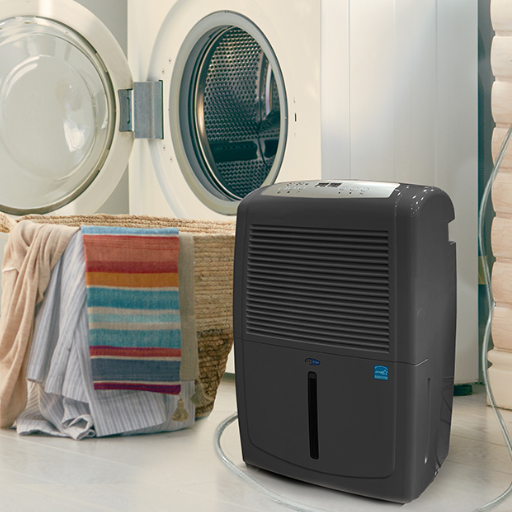
Different factors must be considered in determining whether or not we need a larger dehumidifier. An area over 2,000 square feet or constantly high humidity levels of over 60% will likely require a bigger machine to remove enough moisture. Also, locations with delicate machinery, valuable items, or great ventilation demands will have higher performance and efficiency when they adopt big-capacity dehumidifiers. The pint rating of your machine should continually be assessed and compared to the moisture load of the space for the highest possible results.
Signs that your current dehumidifier is undersized
The undersized dehumidifier cannot maintain the desired humidity levels, which leads to observable signs in your surroundings. Firstly, the unit fails to remove enough moisture when there is constant wetness or condensation on windows and walls. Secondly, if there are musty smells due to mold or mildew growing around, then it implies that humidity still remains too high. Thirdly, an undersized dehumidifier may need to run non-stop without meeting the target humidity level; hence, more energy will be consumed, making the device wear out quickly. Lastly, significant growth of molds or frequent troubles related to allergens such as dust mites, among others, could clearly show that dehumidifiers cannot control their moisture load efficiently. Buying an appropriately sized unit to address these problems will enhance air quality around us, safeguarding our property from damage and improving overall comfort in a room.
When to invest in a larger capacity unit
Several aspects come to mind when considering purchasing a bigger dehumidifier. This is obvious if the current system fails to maintain the proper moisture levels, especially in bigger rooms or places with high humidity. The present dehumidifier does not satisfy the standards of larger spaces, such as condensation on windows, musty odors, or visible mold growths. It is inefficient and undersized if it often cycles or runs without tangible results. A bigger capacity machine handles higher moisture loads better for improved air quality, energy efficiency, and long-term performance.
Balancing size with energy efficiency
Choosing a dehumidifier that balances its capacity with energy efficiency is essential for optimal functioning and cost reduction. Large dehumidifiers are more efficient in regions with high humidity because they can extract more water within an hour without turning off constantly. However, having an oversized one in a small room might result in unnecessary energy use and increased bills. Consider looking for those having Energy Star certification, as this guarantees strict adherence to energy-saving measures by the machine. Other factors to consider include the presence of adjustable humidistats and auto-shutoff functions, which allow it to work only when necessary, thus minimizing power consumption while maintaining ideal humidity levels.
What are some common mistakes when choosing dehumidifier size?
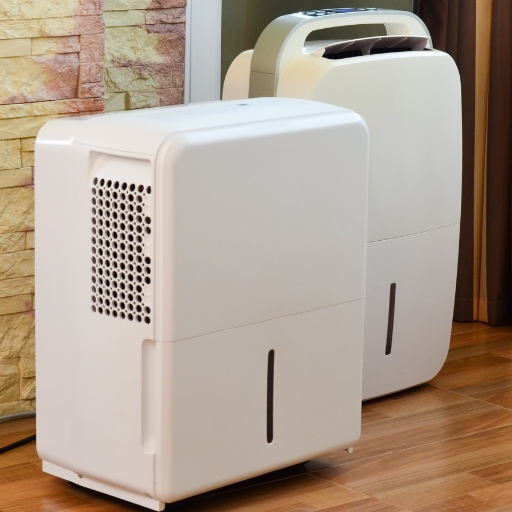
- Ignoring Room Size: Selecting a dehumidifier without accurately measuring the space’s square footage can lead to underperformance or excessive energy use. Ensure the unit’s capacity matches the room size for optimal efficiency.
- Overlooking Humidity Levels: Neglecting the severity of humidity is a standard error. Spaces with high moisture levels, like basements, may require larger capacity units than rooms with moderate humidity.
- Choosing Based on Price Alone: Opting for the cheapest unit can result in inadequate performance or higher operational costs over time due to inefficiency.
- Not Considering Placement: Failing to account for obstructions or airflow restrictions in the room can hinder the dehumidifier’s effectiveness.
- Ignoring Additional Features: Overlooking features such as adjustable settings or energy-saving functions can lead to higher costs and less user control over humidity levels.
Underestimating the space or humidity levels
This is a fatal mistake when it comes to selecting dehumidifiers because people do not consider the square footage or underrate the severity of humidity in that room. Inadequate capacity for a dehumidifier’s space size makes it hard to control humidity effectively and leads to continued wetness and probable mold growth. On the other hand, if you choose one with excess capacity, you will waste energy. Therefore, accurately calculate the area under consideration and monitor current moisture content levels. Instruments like hygrometers can be used to determine relative humidity. At the same time, manufacturers have also created pint-base guidelines that recommend bigger machines for problem areas such as basements and bathrooms, which are more prone to water retention issues. To achieve maximum performance and efficiency, an appropriate compatibility between the specifications of a dehumidifier and those of a room is necessary.
Overlooking the importance of proper sizing
My view regarding proper sizing is always to choose a dehumidifier that matches your room’s requirements. According to my findings, professionals from different sources concur that units that are too small will not effectively control humidity. In contrast, oversized ones may take short cycles and consume much power. The key here is to compute area in square footage and consult manufacturer capacity charts showing room size and moisture levels. Other credible sources stress the importance of doing this before using a hygrometer to measure humidity to identify whether the selected unit can manage mild and severe dampness well. It should be remembered that accurate sizes, as stated above numerous times, form a basis for achieving maximum performance plus saving energy.
Focusing solely on price rather than capacity
If you focus on cost when selecting a dehumidifier, it may not perform at its best, your energy costs will go higher, and you might end up with an ineffective solution. Choosing price over capacity often leads to the selection of units that either cannot handle humidity levels or use excessive amounts of power due to overcapacity. The most economical approach is, therefore, one that considers the unit pint extraction per day as well as energy efficiency ratings (e.g., ENERGY STAR) and additional features such as adjustable humidistats and continuous drainage options about cost. Thus, compared to an ill-suited cheaper alternative, a well-sized and efficiently operating dehumidifier will result in better long-term savings as well as superior regulation of the environment.
How can I find the best dehumidifier size for my specific needs?
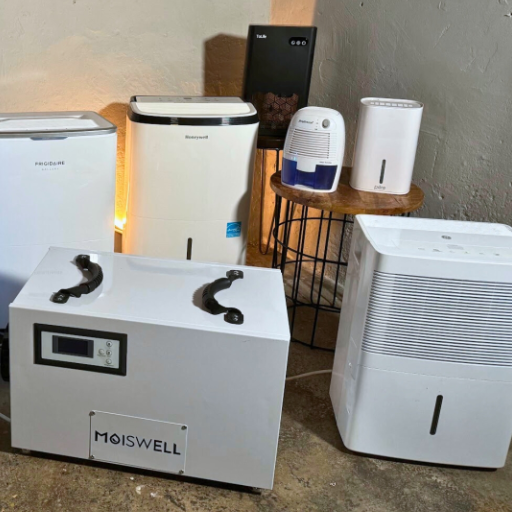
Begin by calculating the size of the dehumidifier needed for your area in square footage and how wet it is. A smaller model with a lower pint capacity (20-30 pints) may be enough for slightly damp rooms, while larger spaces or those with high humidity levels, such as basements, might require 50-70 pint units. Check the manufacturer’s “dehumidifier sizing charts” to better match pint capacity to room size. Also, environmental concerns like climate and room ventilation, which may influence humidity levels, should be considered.
Consulting with HVAC professionals
When deciding on the perfect dehumidifier unit, engagements with HVAC experts enable accuracy in customization. These people can look at areas like sizes, moisture contents, and architectural make, which affect humidity regulation. They employ modern equipment that measures existing dew levels and recommend units with appropriate pint capacities per your requirements. They can also offer details on energy-saving ones, good placement for maximum effect, and how they jibe well within prevailing HVACs. Hence, they are more efficient, thus minimizing the guesswork involved and creating an economical, lasting solution to humidification problems.
Using online calculators and sizing tools
Suppose you want to use online calculators and sizing tools. In that case, I suggest you use platforms that put accuracy first and provide detailed inputs like room dimensions, moisture content, and climatic factors. On reputable websites, the most trusted calculators walk you through the process by inquiring about the square footage of your area, current moisture levels, and desired target. Subsequently, these calculators will recommend a pint capacity that meets your unique needs. These tools improve the accuracy of determining capacity requirements and guide you in making a wise choice that combines efficiency with effectiveness.
Considering future needs and potential house changes
Flexibility, scalability, and energy efficiency must be considered to plan for future needs and home modifications. First, ensure that any structural design allows for future extensions, such as having extra rooms or changing layouts. This can involve using open floor plans and modular construction methods. Secondly, include smart home technologies that can be updated as time passes, such as automated lighting systems, air conditioning units, or security components. Thirdly, sustainable building materials and energy-efficient solutions like solar panels or double-glazed windows should be considered, which will reduce operation costs over a long period. Finally, going through zoning laws and regulations will help avoid hindrances on future renovations. When these factors are combined, it guarantees the home’s adaptability to evolving needs over time, thereby increasing its value in the long run.
References
Frequently Asked Questions (FAQ)
Q: How do I choose the right size dehumidifier for my home?
A: To choose the right size dehumidifier for your home, consider the square feet of the space and its humidity level. Measure the room size and assess how damp it is. For a small space (up to 300 sq ft), a 30-pint dehumidifier may suffice. Larger or more humid areas might require a higher-capacity dehumidifier. Also, consider factors like the climate and the specific moisture issues in your home to determine what size dehumidifier you need.
Q: How does a dehumidifier work to remove moisture from the air?
A: A dehumidifier draws moist air into the unit using a fan. The air passes over cold coils, causing the moisture to condense and collect in a reservoir. The dried air is then reheated and released back into the room. This process continuously removes excess humidity from the air, helping to maintain comfortable humidity levels in your home.
Q: What signs do I need a dehumidifier in my home?
A: Signs that you may need a dehumidifier include musty odors, visible mold growth, condensation on windows, damp spots on walls or ceilings, and a generally humid or stuffy feeling in the air. If you notice these issues or live in a particularly humid climate, you might want to invest in a dehumidifier to improve indoor air quality and prevent moisture-related problems.
Q: What’s the difference between a desiccant dehumidifier and a refrigerant dehumidifier?
A: A desiccant dehumidifier uses a moisture-absorbing material to remove humidity from the air, while a refrigerant dehumidifier uses cooling coils to condense moisture. Desiccant dehumidifiers are often more effective in cooler temperatures and lower humidity levels, while refrigerant models work well in warmer conditions with higher humidity. The choice depends on your specific environment and needs.
Q: How do I determine what size dehumidifier I need for my basement?
A: To determine what size dehumidifier you need for your basement, measure the space’s square footage and assess its dampness level. For a moderately damp 500 sq ft basement, a 30-pint dehumidifier might be sufficient. However, you may need a 50-pint or even a 70-pint for damp conditions or larger areas. Always consider the specific moisture issues in your basement when choosing the right size.
Q: Can I use one dehumidifier for multiple rooms or my entire house?
A: While using one dehumidifier for multiple rooms is possible, it’s not always practical. The size and capacity of the dehumidifier need to match the total area it’s meant to cover. For whole-house dehumidification, you may need to invest in a more extensive whole-house system or use multiple portable dehumidifiers strategically placed throughout your home. The effectiveness depends on the layout of your home and how air circulates between rooms.
Q: How often do I need to empty my dehumidifier?
A: The frequency of emptying your dehumidifier depends on its capacity, the humidity levels in your home, and how often you run it. In very humid conditions, you may need to empty it daily. Many modern dehumidifiers come with auto-shutoff features when the tank is full. For convenience, consider a model with a continuous drain option, which can be connected to a floor drain, eliminating the need for manual emptying.
Q: Are there any spaces where I should avoid using a dehumidifier?
A: While dehumidifiers are generally safe for most indoor spaces, there are some areas where you should avoid using them. These include near water sources like showers or sinks, areas with poor ventilation, or where the temperature drops below 60°F (15°C) regularly. Also, avoid using them in areas with a tripping hazard or where water spillage could cause damage.



